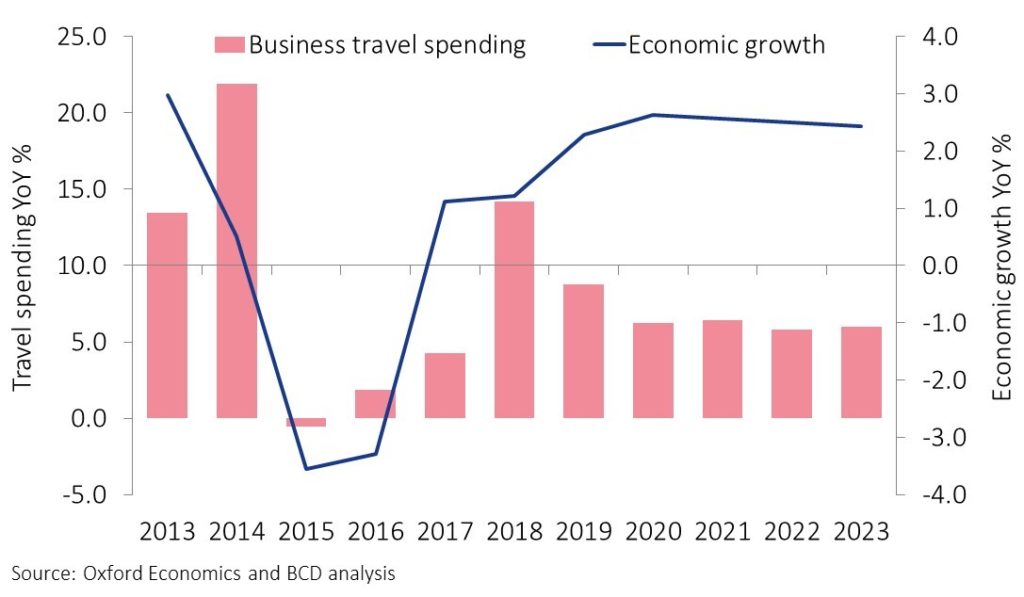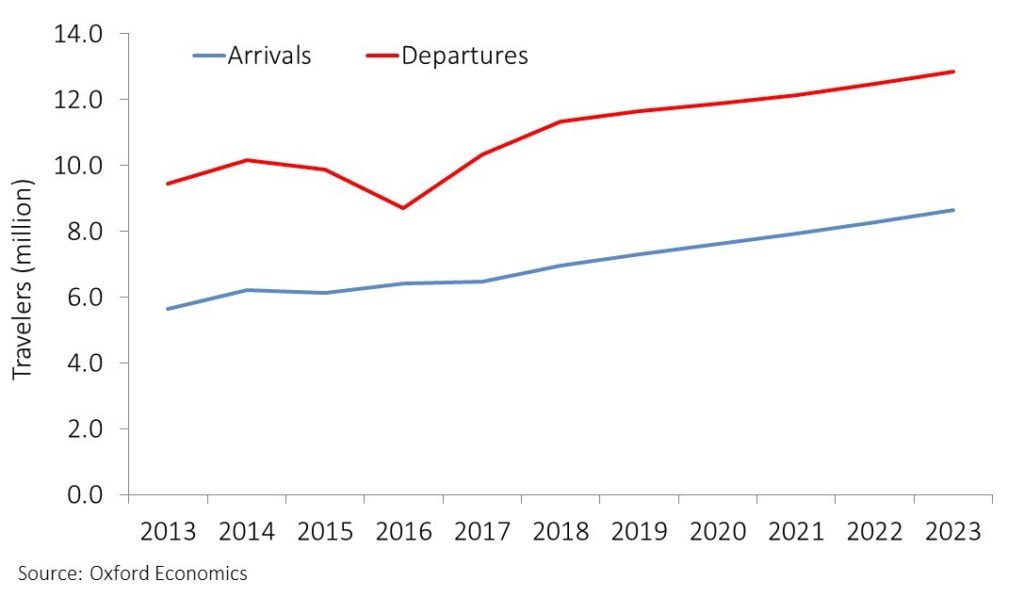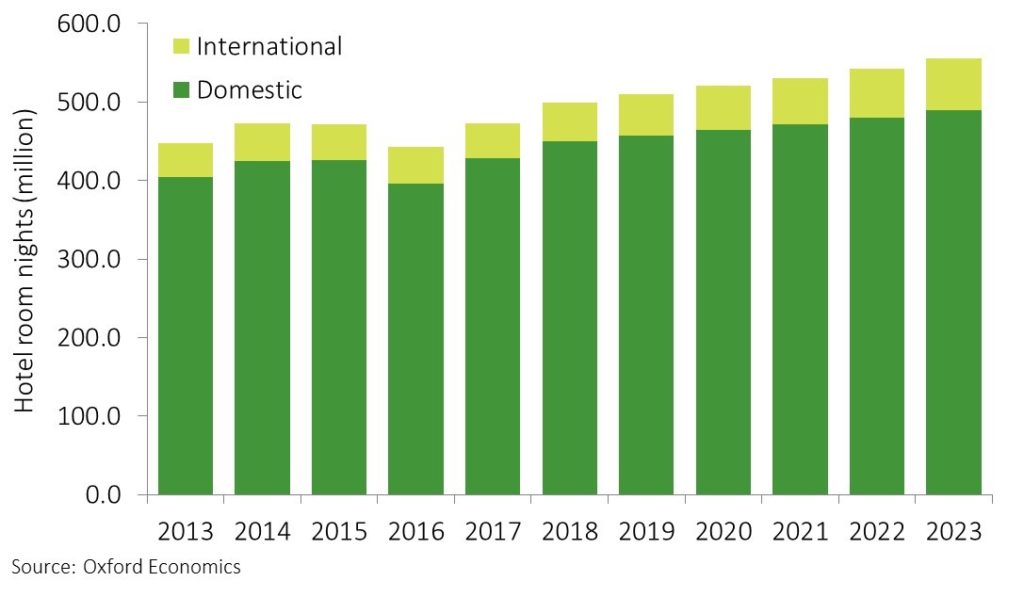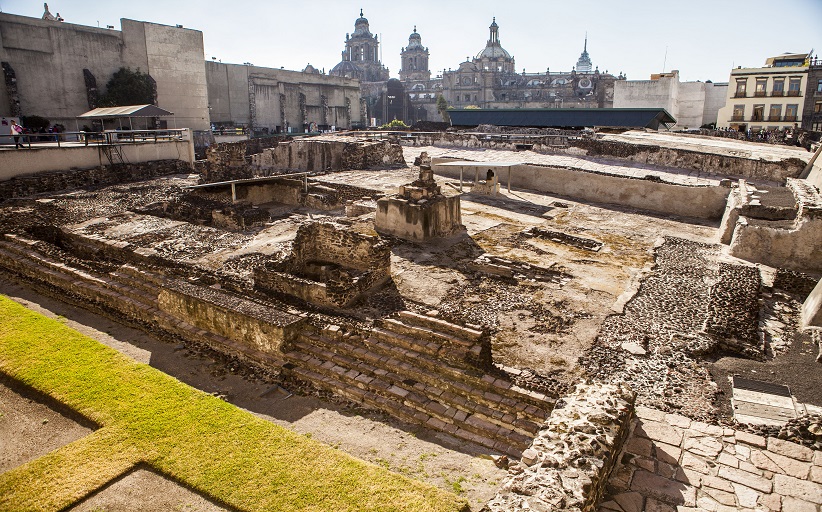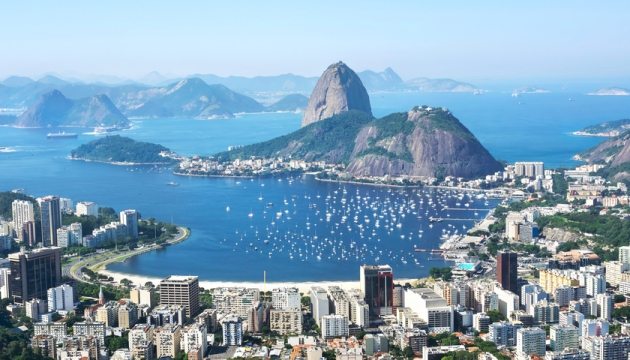
Business travel spending is forecast to rise 6.6% annually through 2023.
Companies spent more than US$24 billion (90 billion Brazilian reals) on business travel to, from and within Brazil in 2018. Domestic trips account for 44% of all spending; outbound international trips account for 37%. Less than a fifth is spent by business travelers visiting Brazil from abroad. Between 2013 and 2018, business travel spending increased 8% per year, on average. But that five-year period was marked by ups and downs in business travel spending—fluctuations caused by Brazil’s uneven economic performance and sharp shifts in currency valuations. Oxford Economics expects business travel spending to expand at a slower 6.6% a year through 2023, with Brazilian travelers continuing to drive growth.
Download the 2019 Industry Forecast, with region-specific reports and infographics available in six languages. Ask how BCD Travel can help you get travelers to emerging and established markets all over the world.
Economic environment
Economic growth and business travel spending
Click on image to enlarge
- Brazil is Latin America’s largest economy. Its gross domestic product of US$1.9 trillion is more than four times larger than the GDP of second-place Argentina.
- It’s the world’s ninth-largest economy, sitting between Italy and Canada in the International Monetary Fund’s global rankings.
- Manufacturing and mineral riches fuel commerce. Economic activity is concentrated in the southeast, particularly in the state of São Paulo.
- Brazil’s economy grew by just over a percentage point in 2017 and 2018. But that was an improvement compared to 2015 and 2016, when the economy shrank more than 3%.
- Oxford Economics expects economic growth of 2.3% in 2019. It could rise even more if a slower than expected increase in U.S. interest rates keeps Brazilian borrowing costs low; government reforms spur the return of foreign investors; and spare capacity allows the economy to grow without pushing up inflation.
Air
International travel
Click on image to enlarge
- From 2013 to 2018, air travel grew 3.9% a year, on average, with international travel expanding from 15 million to more than 18 million trips. Departing Brazilians account for around 60% of international overnight trips.
- Through 2023, growth in international travel is expected to slow to 3.3% per year. Arrivals will drive expansion.
- Argentina is Brazil’s most important inbound market, accounting for 39% of visits in 2018. That share is forecast to fall to 29% by 2023.
- The U.S. is the most popular destination for Brazilians: One-fifth of travelers go there, and the demand is expected to rise 5% annually through 2023.
- Four airlines account for 94% of the flights departing from Brazil’s 10 largest air travel markets: low-cost carriers GOL and Azul Linhas Aereas, pan Latin American group LATAM and regional airline Avianca Brazil. Avianca Brazil, with the smallest slice of market share (11%), is downscaling operations under bankruptcy protection.
Accommodation
Hotel demand
Click on image to enlarge
- Hotel demand increased by more than 11% between 2013 and 2018, rising to almost 500 million room nights.
- Domestic travelers consistently account for 90% of demand, but bookings by international travelers is on the rise. Argentina accounted for 27% of international demand for hotel rooms in 2018.
- Hotels opened at a fast clip ahead of the 2014 FIFA World Cup and 2016 Summer Olympics. Since then, oversupply has caused average daily rates to fall, particularly in Rio de Janeiro.
- With more than 300 hotels in its portfolio, AccorHotels is by far Brazil’s largest chain. Its nearest rival is Choice Hotels, with just 63 properties. Nobile Hoteis is the leading local chain, operating 31 hotels throughout the country, mainly in the midscale and upper-midscale segments.
- BCD Travel’s Industry Forecast predicts ADRs will shift 0% to 2% in 2019.
